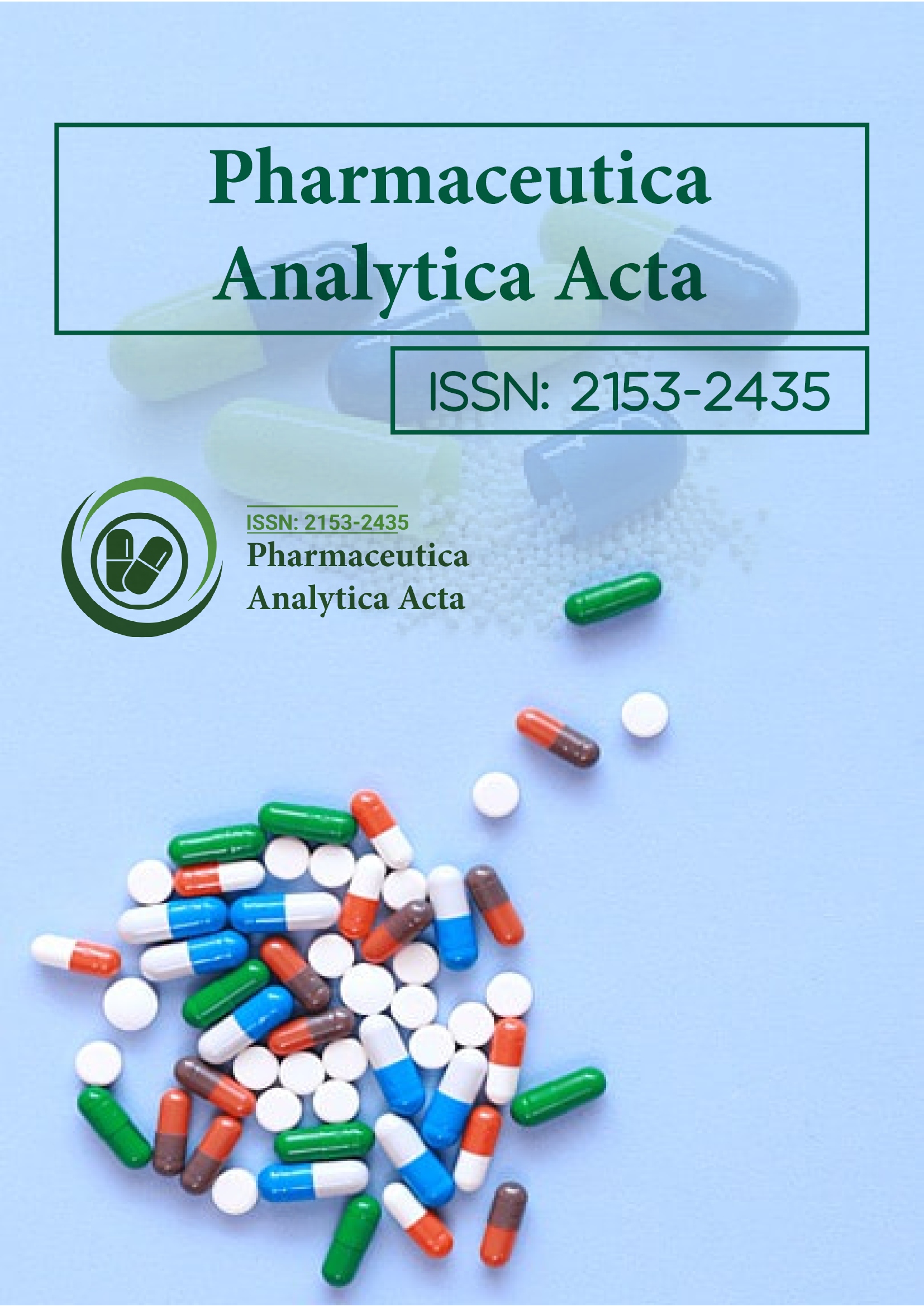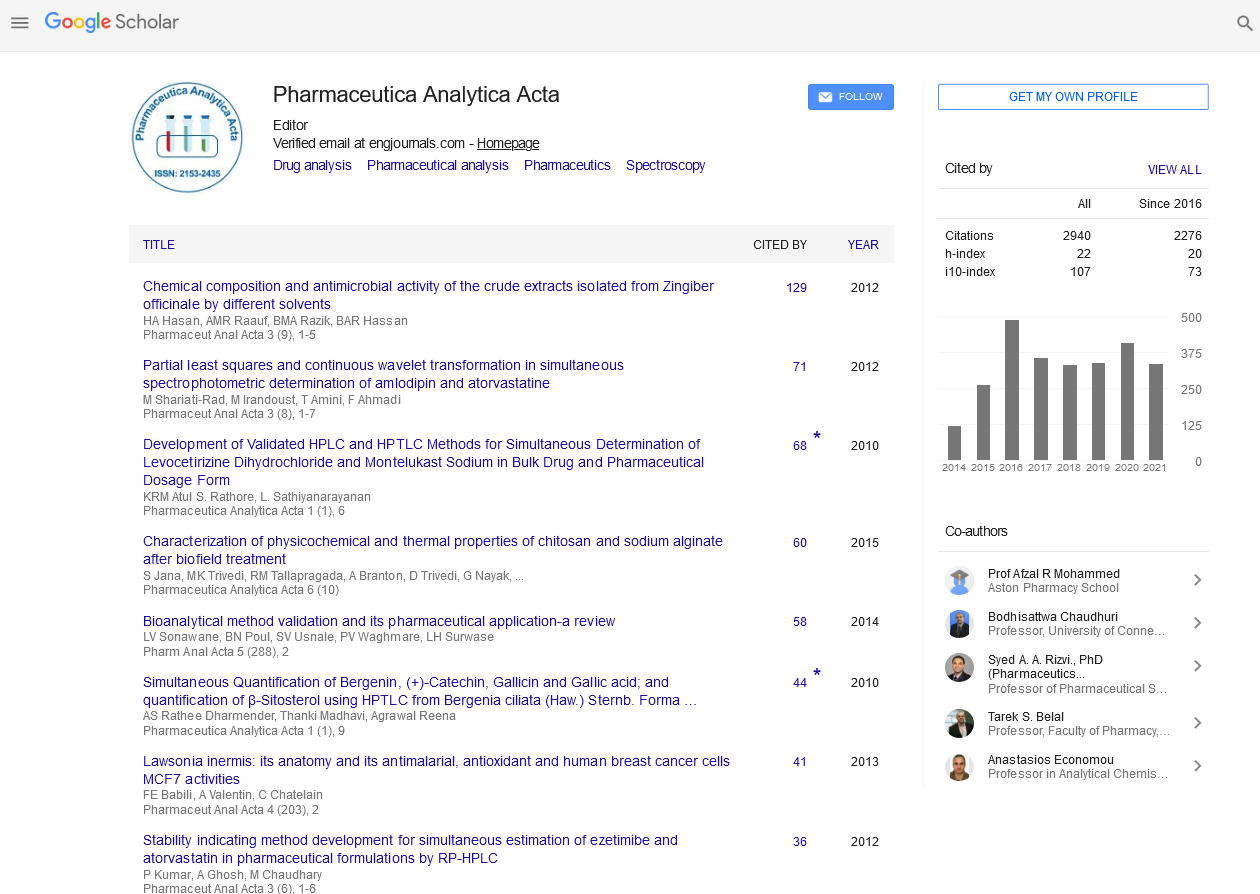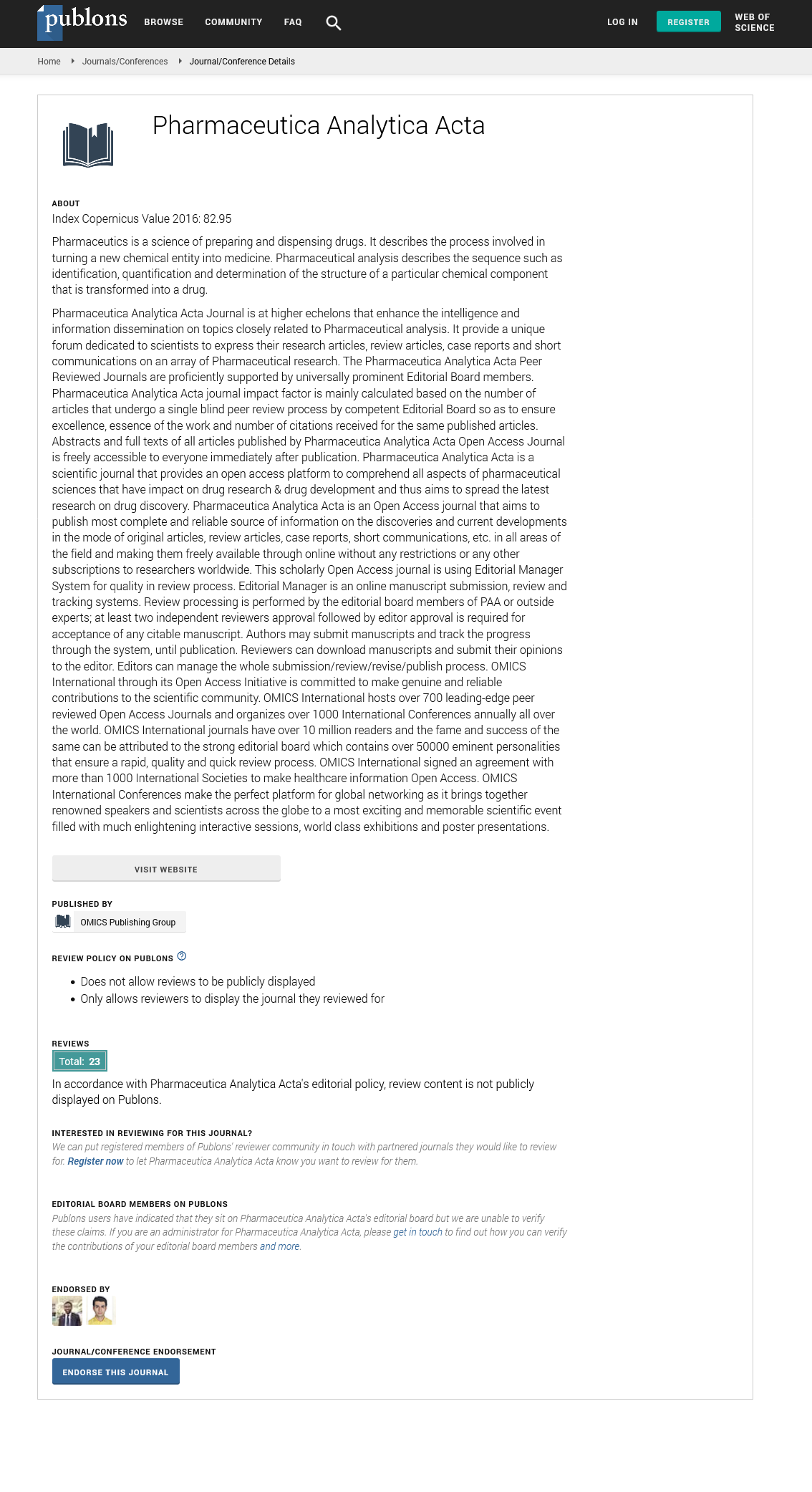Indexed In
- Open J Gate
- Genamics JournalSeek
- Academic Keys
- JournalTOCs
- The Global Impact Factor (GIF)
- China National Knowledge Infrastructure (CNKI)
- Ulrich's Periodicals Directory
- RefSeek
- Hamdard University
- EBSCO A-Z
- OCLC- WorldCat
- Publons
- Geneva Foundation for Medical Education and Research
- Euro Pub
- Google Scholar
Useful Links
Share This Page
Journal Flyer

Open Access Journals
- Agri and Aquaculture
- Biochemistry
- Bioinformatics & Systems Biology
- Business & Management
- Chemistry
- Clinical Sciences
- Engineering
- Food & Nutrition
- General Science
- Genetics & Molecular Biology
- Immunology & Microbiology
- Medical Sciences
- Neuroscience & Psychology
- Nursing & Health Care
- Pharmaceutical Sciences
Commentary Article - (2025) Volume 16, Issue 3
Spectroscopic Techniques in Modern Drug Characterization
Patrick Howard*Received: 30-Aug-2025, Manuscript No. PAA-25-30226; Editor assigned: 01-Sep-2025, Pre QC No. PAA-25-30226; Reviewed: 16-Sep-2025, QC No. PAA-25-30226; Revised: 22-Sep-2025, Manuscript No. PAA-25-30226; Published: 30-Sep-2025, DOI: 10.35248/2153-2435.25.16.824
Description
Spectroscopic techniques hold a central position in the field of drug analysis, serving as powerful tools for exploring the structural, compositional and stability aspects of medicinal substances. They provide scientists with the ability to examine compounds at the molecular level and interpret both physical and chemical behaviors with exceptional precision. Methods such as ultraviolet, infrared, nuclear magnetic resonance and fluorescence spectroscopy each offer unique capabilities for studying the nature of drug components. Infrared spectroscopy assists in identifying functional groups and detecting even subtle chemical alterations within active ingredients. Nuclear magnetic resonance provides a deeper understanding of molecular structure, ensuring that compounds possess the correct configuration and integrity. Ultraviolet and fluorescence spectroscopy, on the other hand, play an essential role in quantifying concentration levels and identifying impurities present in trace amounts. When applied together, these methods create a multidimensional analytical framework that reveals not only the identity and composition of substances but also their stability and interactions under various conditions. Spectroscopic examination enables both qualitative and quantitative assessment of medicinal compounds. The capacity to observe molecular vibrations, magnetic properties and electronic transitions offers direct insight into how a compound’s physical structure relates to its functional characteristics. Infrared spectroscopy is frequently employed to study bonding patterns and detect any chemical transformations that might occur during formulation, processing, or storage. Ultraviolet techniques are commonly used to determine concentrations of active components within solutions, providing a rapid and accurate means of quantification. Fluorescence methods, due to their heightened sensitivity, are ideal for detecting minute impurities or degradation products that might otherwise escape detection. Nuclear magnetic resonance remains unmatched in its ability to provide detailed structural information, including atomic connectivity, spatial arrangement and conformational dynamics. In practice, this makes it indispensable for confirming the authenticity of synthesized compounds, identifying possible isomeric impurities and assessing overall purity. Furthermore, it aids in studying how active substances interact with other formulation components—a crucial factor in ensuring long-term stability and therapeutic consistency.
The use of spectroscopic methods extends well beyond basic compositional analysis or impurity detection. They also play a vital role in characterizing complex dosage forms, including emulsions, suspensions, gels and liposomal systems. Techniques like infrared and Raman spectroscopy are particularly valuable in evaluating physical characteristics such as particle size distribution, crystallinity and hydration states in semi-solid or solid preparations. These parameters directly influence the product’s stability and behavior during manufacturing, storage and administration. Another important application of these techniques is the investigation of polymorphism, a phenomenon where a single compound exists in multiple crystalline forms. Each form may exhibit distinct solubility, melting point and bioavailability properties. Infrared and Raman spectroscopy enable quick, non-destructive differentiation of these forms, allowing manufacturers to maintain strict control over the physical consistency of the drug substance throughout production. This ensures that every batch retains the same therapeutic performance, stability and safety profile. Instrumental factors exert a profound influence on the quality and reliability of spectroscopic results. Variables such as wavelength selection, detector sensitivity, slit width, sample concentration and solvent composition all determine the clarity and accuracy of the recorded spectra. To achieve uniformity and reliability across different laboratories, calibration and standardization play essential roles. Establishing consistent calibration protocols ensures that results generated from multiple instruments can be confidently compared. Additionally, data processing techniques such as baseline correction, noise filtering and smoothing are vital for refining spectral information. Small distortions caused by environmental fluctuations or electronic interference can significantly impact interpretation. To minimize such effects, statistical and mathematical procedures including Fourier transformation, derivative spectroscopy and principal component analysis are often employed. These advanced computational tools enhance signal resolution, ensuring that the observed patterns truly represent chemical characteristics rather than instrumental noise.
Quantitative spectroscopic applications rely heavily on calibration curves that establish a direct relationship between signal intensity and analytic concentration. Parameters such as linearity, accuracy and precision must be carefully validated to confirm the dependability of the method for everyday use in quality monitoring and stability evaluation. Validation strengthens the confidence that the derived data genuinely reflect the characteristics of the material being studied. Moreover, it ensures that results meet strict standards of reproducibility and scientific integrity. Spectroscopy also serves as a crucial means of assessing product stability over time. Continuous monitoring of spectral variations provides early warning signs of chemical degradation processes such as oxidation, hydrolysis, or photodecomposition. Shifts in infrared or ultraviolet absorption bands, or the appearance of new peaks corresponding to degradation by-products, indicate structural changes occurring within the formulation. By interpreting these spectral shifts, scientists can propose suitable stabilizing agents, optimal storage conditions, or protective packaging that can extend product shelf life and preserve efficacy. Beyond stability testing, spectroscopic evaluation supports innovation in material characterization and process optimization. For example, in monitoring solid-state transformations, infrared and Raman spectroscopy can detect subtle differences in crystal packing and hydration, which influence how the substance dissolves and reacts biologically. Similarly, fluorescence spectroscopy can be used to trace molecular interactions in complex formulations, offering insights into aggregation, solvation, or excipient compatibility.
Citation: Howard P (2025). Spectroscopic Techniques in Modern Drug Characterization. Pharm Anal Acta. 16:824.
Copyright: © 2025 Howard P. This is an open-access article distributed under the terms of the Creative Commons Attribution License, which permits unrestricted use, distribution and reproduction in any medium, provided the original author and source are credited.


